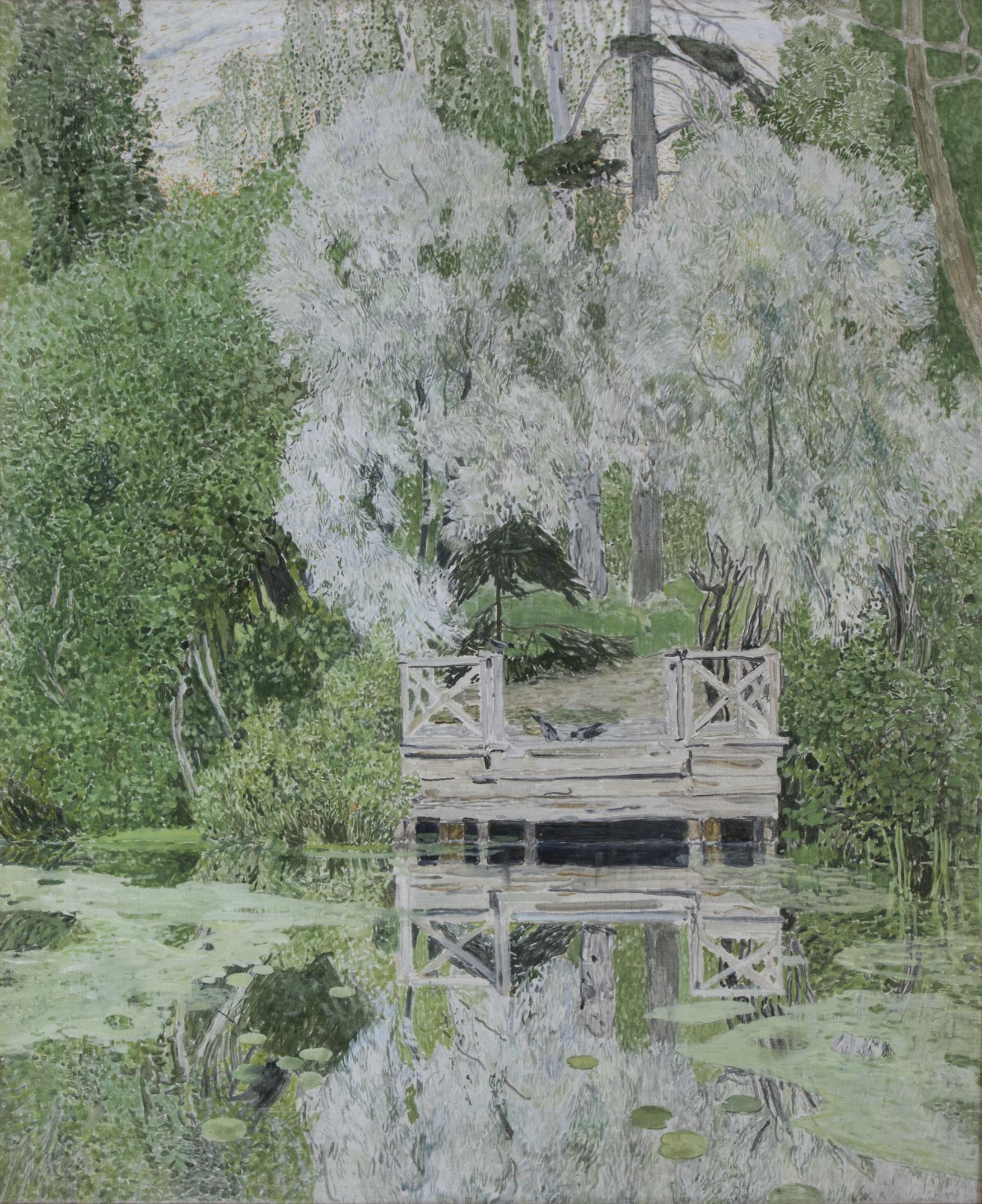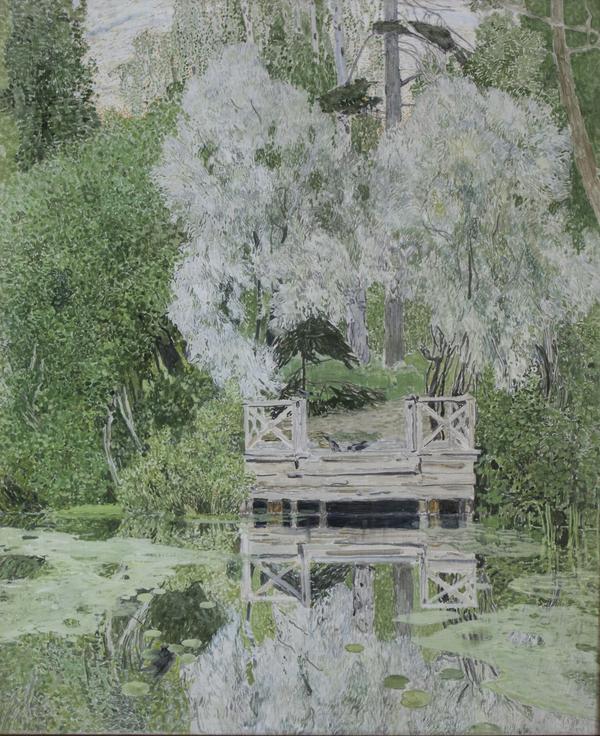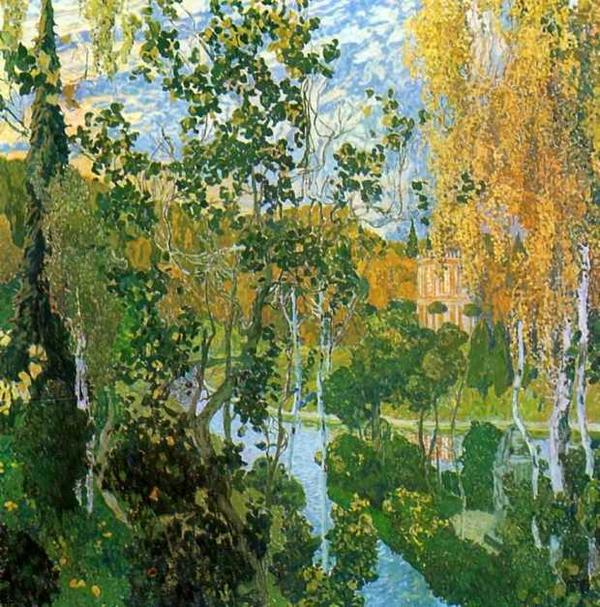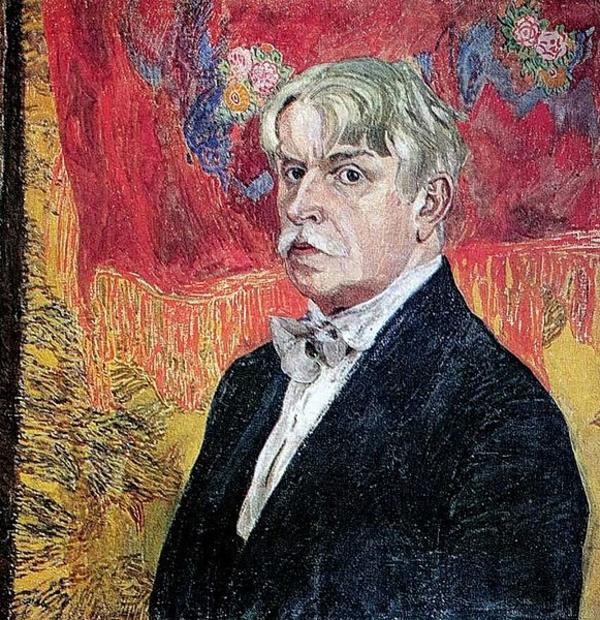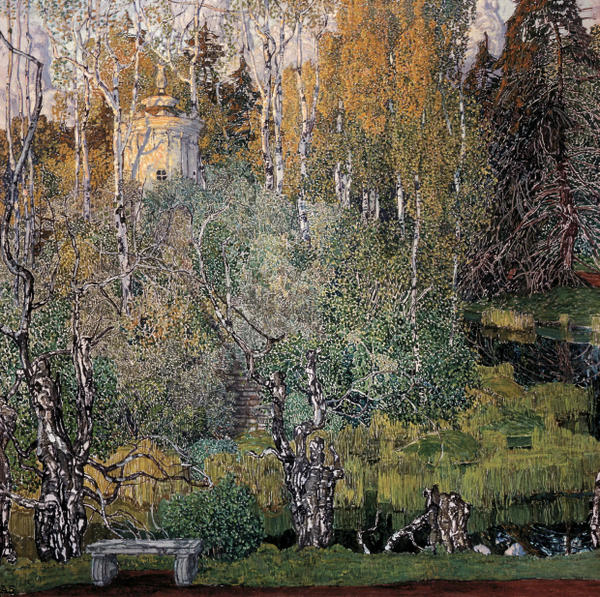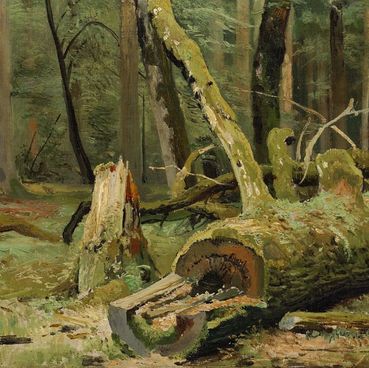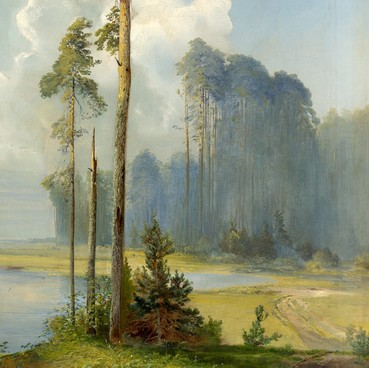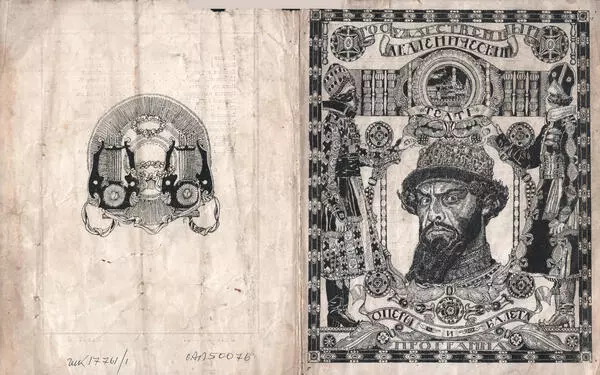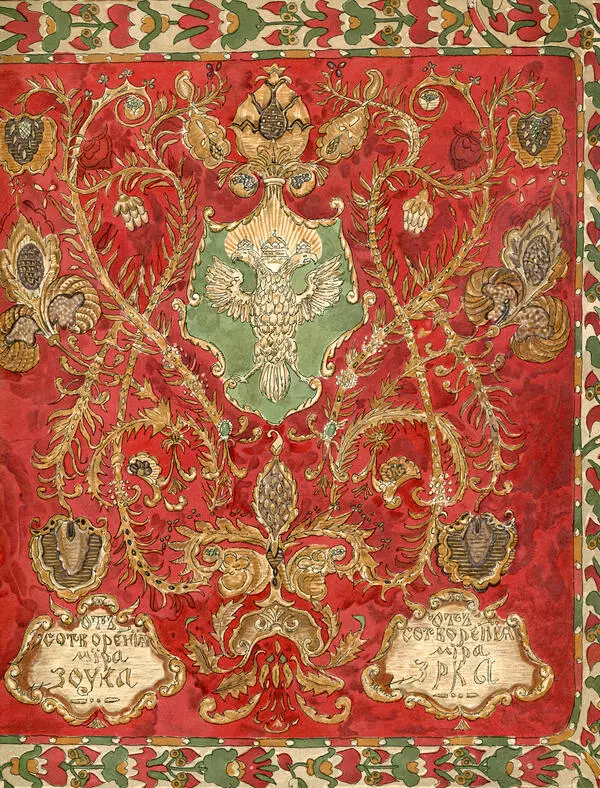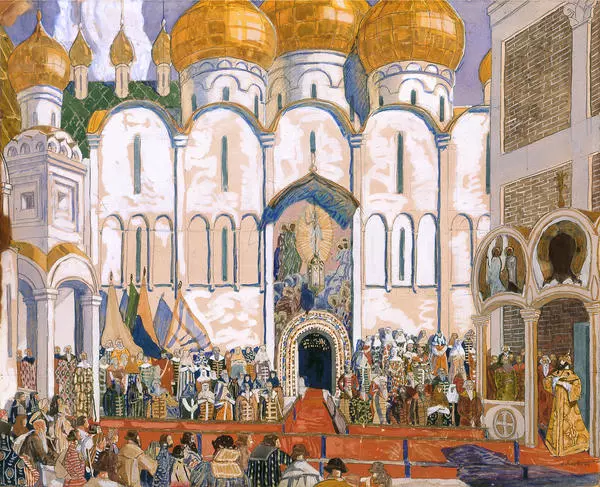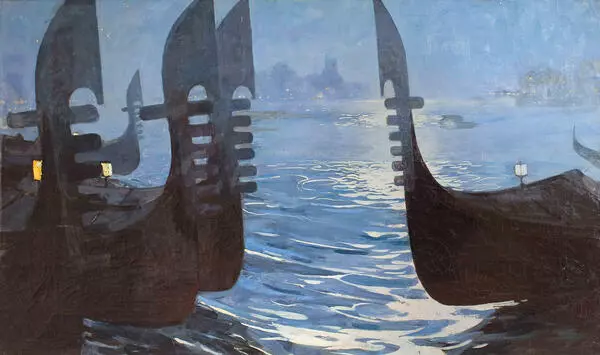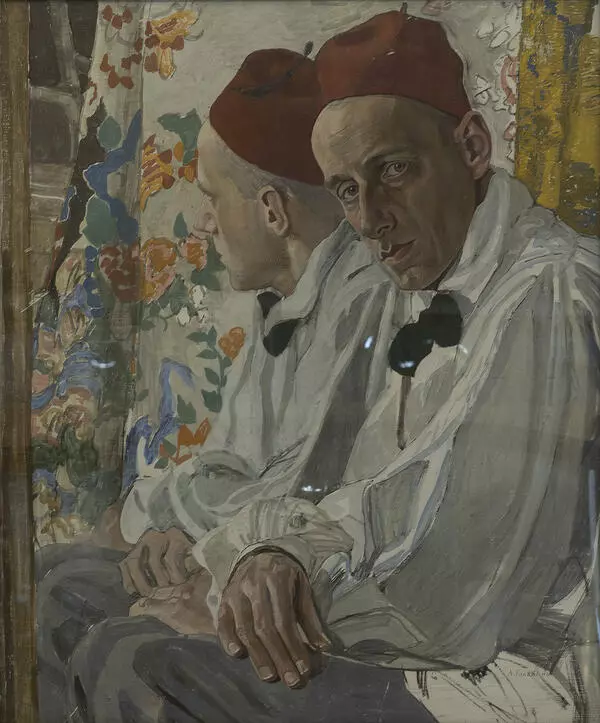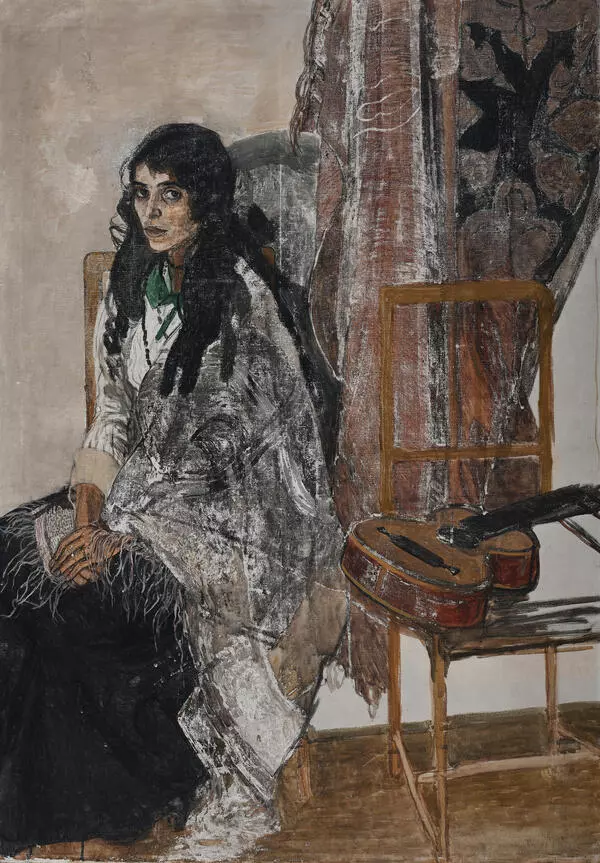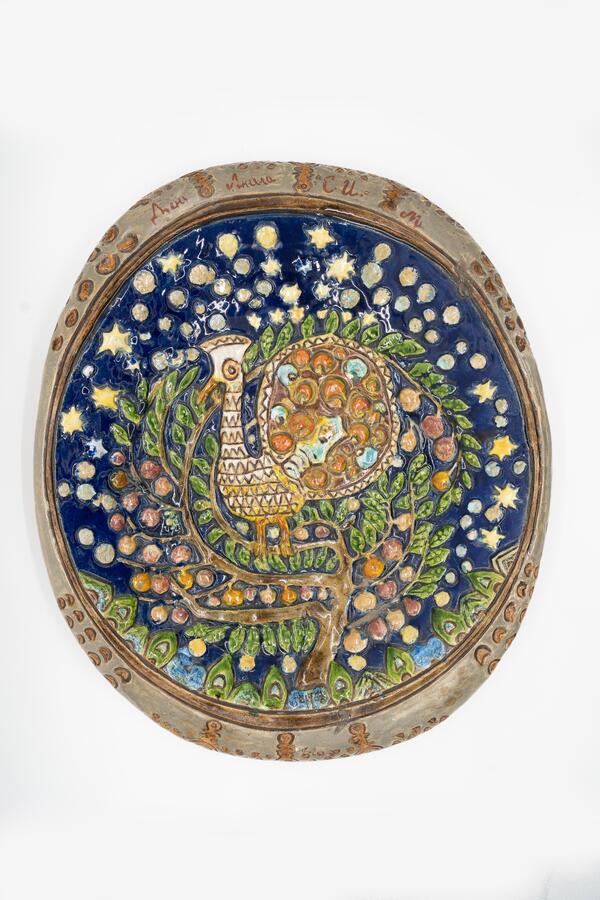Alexander Golovin painted White Willows in 1909. The painting was named after the type of willow depicted, which is called ‘silver willow’, so sometimes the piece is called Silver Willows. This is one of many park landscapes by the artist. He often depicted deserted places, where nature has taken over piers and pavilions. This is how the artist depicted the landscapes of Pavlovsk, Tzarskoye Selo, and Neskuchniy Garden. For Golovin that brushwood did not demonstrate decay and degradation. On the contrary, the trees looked as if they had found a place where they could evolve to the fullest extent of their power.
In this painting, we see the white willows vegetating ‘at full blast’; the clean water reflects the effects of silvery light. The artist painted numerous green gradations with individual brush strokes, so that they create figured tracery of leaves resembling emerald panels.
In this painting, we see the white willows vegetating ‘at full blast’; the clean water reflects the effects of silvery light. The artist painted numerous green gradations with individual brush strokes, so that they create figured tracery of leaves resembling emerald panels.
